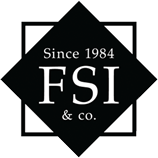Families First Coronavirus Response Act limited analysis
Two provisions which apply specifically to employees, employers and the self-employed.
- The Emergency Paid Sick Leave Act (EPSLA) and
- The Emergency Family and Medical Leave Expansion Act (EFMLEA)
Emergency Family and Medical Leave Expansion Act
Effective 4/2/2020, EFMLEA requires employers with fewer than 500 employees to provide employees with up to 12 weeks of leave for a “qualifying need related to a public health emergency” and to return the employee to work at the end of the leave. A qualifying need means that an employee is unable to work or telework because the employee needs leave to care for a son or daughter under the age of 18 whose school or place of care has closed or whose childcare provider is unavailable, because of an emergency with respect to COVID-19 declared by a federal, state, or local authority. Eligible employees must have worked for a minimum of 30 days with the employer.
Under the EFMLEA, the first 10 days of the employee’s leave may consist of unpaid leave, however, an employee may choose to substitute any accrued paid leave such as vacation, personal, medical, or sick leave for such unpaid leave. Or, if an employee qualifies for both this (the EFMLEA) and Emergency Paid Sick Leave, the employee may use the Emergency Paid Sick Leave during the first 10 days of the EFMLEA leave that would normally be unpaid.
Following the 10-day grace period an employer must provide paid leave to the employee for each additional day of leave. The rate of pay for such paid leave is calculated based on a rate of not less than two-thirds of the employee’s regular rate of pay and the number of hours the employee would otherwise normally be scheduled to work but is capped for each employee at two-thirds of regular pay rate up to $200 per day or $10,000 in the aggregate per employee.
EFMLEA tax credits
Employers paying family and medical leave wages under the EFMLEA may claim a 100% refundable credit against the employer’s share of payroll tax for each employee, limited to two-thirds of regular pay rate up to $200 per day up to a total of $10,000 per employee plus a pro rata share of the employer’s qualified health plan expenses. This credit will be claimed on quarterly payroll tax returns Form 941. It remains to be seen if employers can reduce their normal federal tax deposits for the amount of the credit or if they will be able to request an accelerated credit refund in lieu of the payroll tax credit. We expect the IRS to release guidance on this shortly.

